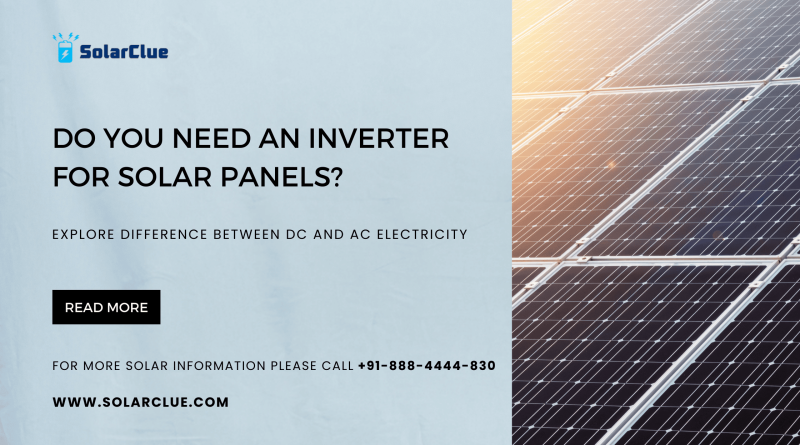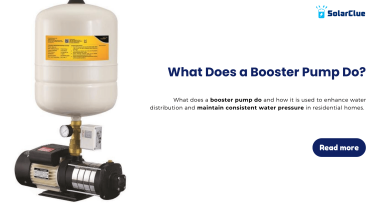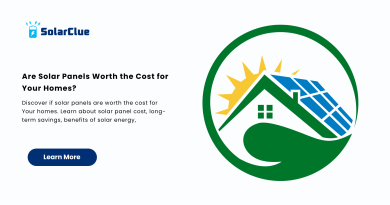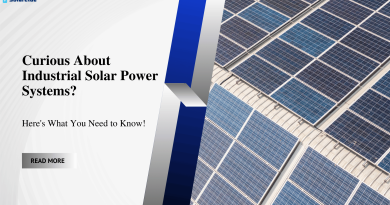Do You Need an Inverter For Solar Panels?
Inverters are crucial components in solar power systems, converting the direct current (DC) electricity generated by solar panels into alternating current (AC) electricity that can be used by household appliances and fed into the electrical grid. This blog explains the difference between DC and AC electricity, the process of DC to AC conversion, the types of inverters available, and their impact on overall system performance.
Table of Contents
- 1 The Role of Inverters in Solar Energy Conversion
- 1.1 Types of Inverters and Their Applications
- 1.2 Inverter Efficiency and Its Impact on Energy Output
- 1.3 Matching Inverter Size to Solar Panel Capacity
- 1.4 Inverter Installation and Maintenance
- 1.5 Troubleshooting Common Inverter Issues
- 1.6 The Future of Inverter Technology and Its Impact on Solar Power Systems
- 1.7 Inverter Safety and Regulations
- 1.8 Conclusion
- 1.9 FAQs
The Role of Inverters in Solar Energy Conversion
Solar panels generate DC electricity, which needs to be converted to AC electricity for practical use. Inverters perform this essential conversion, making the power compatible with household appliances and the electrical grid.
Types of Inverters and Their Applications
String Inverters
Description: String inverters connect a series of solar panels (a string) and convert the combined DC output into AC.
Advantages:
- Cost-effective
- Simple installation and maintenance
Disadvantages:
- Reduced efficiency if one panel in the string is shaded or underperforming
- Single point of failure for the entire string
Microinverters
Description: Microinverters are installed on each individual solar panel, converting DC to AC at the panel level.
Advantages:
- Maximizes energy production for each panel
- Improved system monitoring and performance tracking
- Reduced impact of shading on overall system performance
Disadvantages:
- Higher upfront cost
- More complex installation
Power Optimizers
Description: Power optimizers are similar to microinverters but work in conjunction with a central string inverter. They condition the DC output from each panel before sending it to the inverter.
Advantages:
- Enhanced energy production and efficiency
- Lower cost than microinverters
- Improved performance in shading conditions
Disadvantages:
- Requires installation of both optimizers and a central inverter
- More complex system design
Inverter Efficiency and Its Impact on Energy Output
Importance of Inverter Efficiency
Inverter efficiency refers to the percentage of DC electricity that is successfully converted into usable AC electricity. High-efficiency inverters ensure that more of the generated power is utilized, improving the overall performance and cost-effectiveness of the solar power system.
Impact on System Performance
- Energy Loss: Lower efficiency inverters result in greater energy loss during the conversion process.
- Cost Savings: High-efficiency inverters can lead to significant cost savings over the system’s lifetime by maximizing energy output.
Matching Inverter Size to Solar Panel Capacity
Properly sizing the inverter to match the solar panel capacity is crucial for optimal performance. An undersized inverter may not handle the maximum output of the solar panels, while an oversized inverter can lead to inefficiencies and higher costs.
Inverter Installation and Maintenance
Installation Tips
- Location: Install inverters in a cool, shaded, and well-ventilated area to prevent overheating.
- Accessibility: Ensure the inverter is easily accessible for maintenance and monitoring.
Maintenance Guidelines
- Regular Inspections: Check for signs of wear, damage, or malfunction.
- Cleaning: Keep the inverter clean and free from dust and debris.
- Software Updates: Keep the inverter’s firmware up to date to ensure optimal performance and compatibility.
Troubleshooting Common Inverter Issues
Common Issues
- Error Codes: Inverters often display error codes indicating specific issues. Refer to the manufacturer’s manual for troubleshooting steps.
- No Power Output: Check the connections, breakers, and ensure the inverter is receiving sufficient DC input from the panels.
- Overheating: Ensure proper ventilation and check for any obstructions or faults in the cooling system.
The Future of Inverter Technology and Its Impact on Solar Power Systems
Advancements in inverter technology are focusing on improving efficiency, reliability, and integration with smart grid systems. Emerging trends include:
- Hybrid Inverters: Combining solar and battery storage capabilities in a single unit.
- Smart Inverters: Enhancing grid stability by providing grid-support functions and remote monitoring.
- Increased Efficiency: Continuous improvements in conversion efficiency and reduction of energy losses.
Inverter Safety and Regulations
Safety Considerations
- Electrical Safety: Ensure proper installation and adherence to electrical codes to prevent hazards.
- Overcurrent Protection: Use appropriate fuses and breakers to protect against overcurrent and short circuits.
Regulatory Compliance
- Certifications: Ensure inverters meet relevant certifications and standards (e.g., UL, IEC).
- Grid Compliance: Verify that the inverter complies with local grid regulations and interconnection requirements.
Conclusion
Inverters play a vital role in solar power systems by converting DC electricity from solar panels into usable AC power. Understanding the different types of inverters, their advantages and disadvantages, and their impact on system performance is essential for optimizing energy output and ensuring a reliable and efficient solar power system. By keeping up with advancements in inverter technology and adhering to safety and regulatory guidelines, solar power users can maximize their system’s potential and contribute to a sustainable energy future.
Here at SolarClue®, we offer a smart, practical, and “beautiful” solution. You will be answered for all the questions related to Solar.
We provide all kinds of brands that are the Best Solar panels in India.
If you are the one who is planning for the solar power system. Don’t hesitate to contact our team!
Looking forward to empowering you with solar energy, just like hundreds of our other clients!
FAQs
1. What is the primary function of an inverter in a solar power system?
The primary function of an inverter is to convert DC electricity generated by solar panels into AC electricity that can be used by household appliances and fed into the electrical grid.
2. What are the differences between string inverters, microinverters, and power optimizers?
String inverters connect a series of panels and convert their combined DC output into AC. Microinverters are installed on each panel, converting DC to AC at the panel level. Power optimizers condition DC output from each panel before sending it to a central inverter for conversion to AC.
3. Why is inverter efficiency important?
Higher inverter efficiency ensures that more of the generated DC electricity is converted into usable AC electricity, maximizing energy output and cost savings.
4. How do I match the inverter size to my solar panel capacity?
Properly size the inverter based on the total wattage of your solar panels to ensure optimal performance and efficiency. Consult with a solar installer for precise calculations.
5. What should I do if my inverter is not producing any power?
Check the connections, breakers, and ensure the inverter is receiving sufficient DC input from the panels. Refer to the manufacturer’s manual for troubleshooting steps and error codes.




